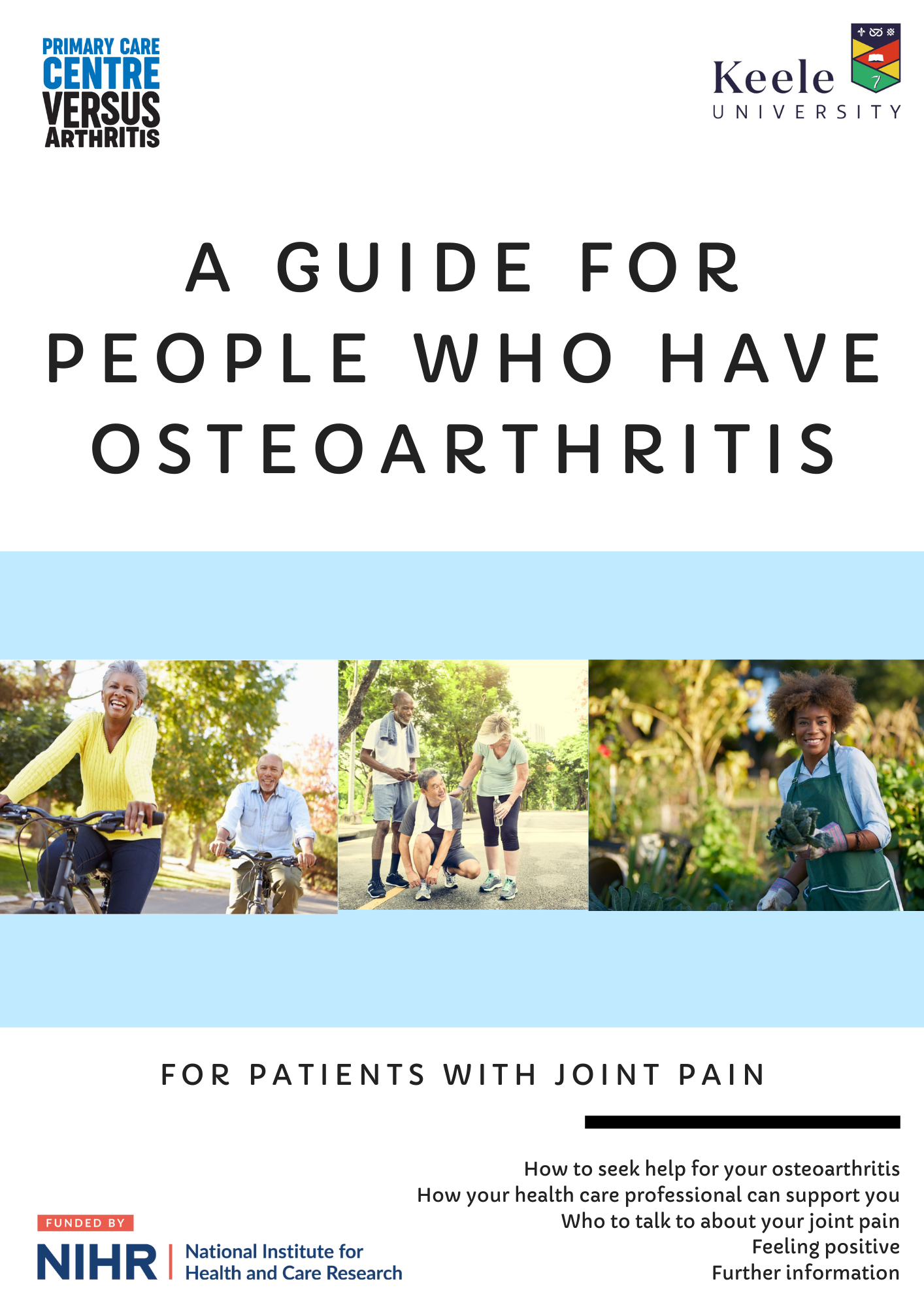Osteoarthritis Guidebook
You can read the osteoarthritis guidebook using the links below to navigate through the different chapters to learn more about this condition and how you can manage it.
You can also download your copy of the guidebook by clicking this link – Osteoarthritis Guidebook
 Personal experiences of joint pain
Personal experiences of joint pain
Further versions
The osteoarthritis guidebook is also available in the following versions:
Word only version (for inclusion in EMIS systems)
Scottish Osteoarthritis brief guide 2020
You can work through the guidebook section by section, learning all about osteoarthritis and how to manage your conditions here – Guidebook Online Learning
Feedback
Have you used the guidebook to make changes in your life which have helped you to manage your arthritis? We would like to hear from you to improve our patient information. Please fill out this quick form below to help us do this –
Introduction
Joint pain and stiffness are very common in people after middle age and whilst pain usually goes away with rest, stiffness may get worse. The term osteoarthritis or OA is often used to describe these type of joint symptoms. Typically, OA affects the joints such as the hip, knee also small joints found in hands and feet. OA is one of the major causes of reduced mobility and it particularly has an impact on people’s ability to continue with their everyday activities such as employment, leisure activities or hobbies. This guidebook has been written by patients and healthcare professionals for patients and carers, and will offer information on managing symptoms and different treatments.
All the comments in italics are what people have told researchers about their experience of having osteoarthritis type joint pain. Reading about their experiences may help you. For example, it may make you feel more confident to try out different ways of managing your symptoms, or reassure you that others have had similar experiences to you. People’s circumstances vary enormously and it may be that you will identify more with some individual experiences than with others.
This is the third version of the Osteoarthritis Guidebook and is now available in several different formats – there is a short version, and online text version and an online flipbook version, which you can find here: www.jigsaw-e.com/patient-focus/guidebook/ It has also been translated into several different European languages.
This easy to read guidebook concerns osteoarthritis, and draws on both the knowledge and experiences of patients and health professionals. We hope that you will be able to understand the reasoning behind the advice that is given and that you will see how to use it to fit into your own life.
- Professor Christian Mallen, Head of School of Primary, Community and Social Care, NIHR Research Professor in General Practice
I was diagnosed with osteoarthritis in my knees about 15 years ago and more recently I have increasing pain in my thumbs. It is sometimes very difficult to carry on with my normal lifestyle because I am a very keen gardener, but since the onset of osteoarthritis, this guidebook has shown me how to structure my time in a way where I can do heavy work when I am feeling good, and light work when I am not so good.
This guidebook is a comprehensive guide to understanding and managing your pain, and has been co-written by experts – patients who have osteoarthritis. We are the experts in our condition and we know what we need to help us manage our pain. Over the years I have constantly referred to this guidebook to manage my osteoarthritis, one particular section that I feel is very important is the section on Feeling Positive. It is easy to feel depressed about your condition, but this chapter shows you how to carry on your normal life, it urges you to stay positive, do gentle exercise, find ways around problems and encourages you to do something that usually brings enjoyment if you are in a low mood.
Overall, the guidebook offers lots of advice on managing and treating joint pain, it gives advice on what kind of exercise is good for you and even talks about footwear, weight management and using distraction and relaxation to reduce pain.
I hope you find it as useful as I have.
- John Murphy, Keele osteoarthritis patient champion
This guidebook presents independent research funded by the National Institute for Health Research (NIHR) under its Programme Grants for Applied Research programme (grant number RP-PG-0407-10386). The views expressed in this paper are those of the authors and not necessarily those of the NHS, the NIHR or the Department of Health and Social Care
Many people contributed to the development of this guidebook.
Members of the Versus Arthritis Primary Care Centre User Group (Formally Arthritis Research UK) and Telford and Wrekin Arthritis Support Group, and health care practitioners from Cheshire and North Staffordshire shaped the content. Staff from the Versus Arthritis Primary Care Centre advised on the evidence base of the clinical information. Versus Arthritis reviewed a draft version.
The development of the Guidebook was possible through work undertaken within a number of different research projects, funded by Versus Arthritis, the Economic and Research Council, and the National Institute of Health Research.
This booklet has been updated in line with NICE 2014 guidance and findings from the MOSAICS study, and is designed for use by adults with OA aged over 45 years of age.
© Keele University 2020
All rights reserved. No part of this publication may be reproduced, stored in a retrieval system, or transmitted in any form by any means, electronic, mechanical, photocopying, recorded, or otherwise, without the prior written permission of Keele University